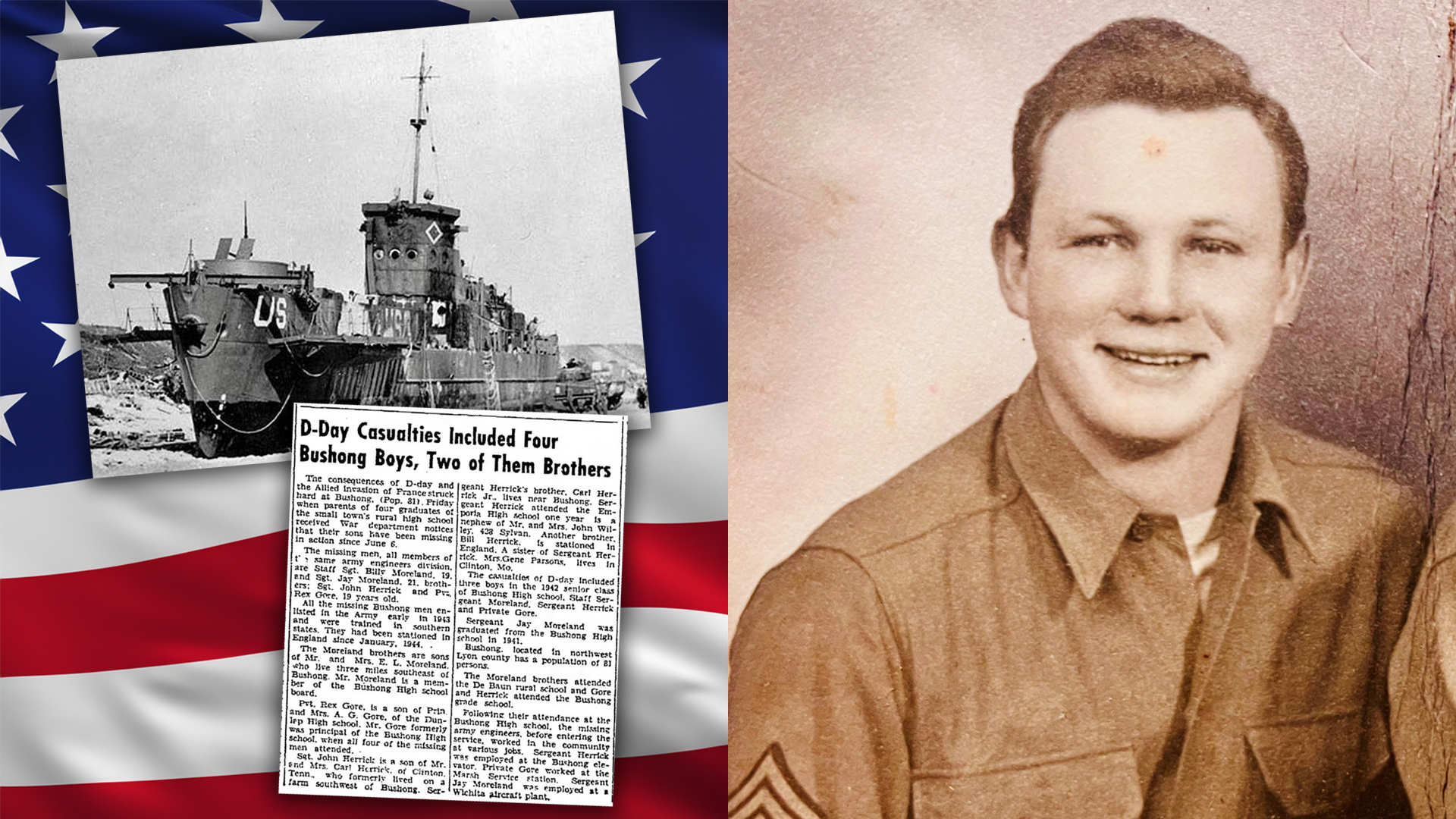

U.S. Army Sgt. John O. Herrick was aboard the Landing Craft Infantry (Large) 92 en route to Omaha Beach during the D-Day assault on June 6, 1944. Assigned to Company B, 149th Engineer Combat Battalion, he never set foot on the sandy beaches of Normandy.
Almost 80 years later, Herrick has now been identified by the Defense POW/MIA Accounting Agency and will be laid to rest in his hometown of Emporia, Kansas, on Nov. 11, 2024 — Veterans Day. His remains were identified on Aug. 21, 2023, but his family wasn’t briefed until just recently.
Sean Everette, DPAA Media Relations Chief, said the DPAA doesn’t brief the family but provides a comprehensive report delivered to the family by representatives of the service member’s branch of service, which in this case, was U.S. Army Mortuary Affairs.
“Typically, they notify the family of the ID via telephone within 48 hours. However, when the follow-on full identification briefing happens is ultimately up to the family,” Everette said in a written statement provided to Task and Purpose. “It can sometimes take months after that initial notification before the full briefing happens. I imagine that’s what happened here.”
LCI 92 hit an underwater mine before it was struck by Nazi artillery, which ignited the ship’s fuel stores, instantly killing everyone in the troop compartment. It was almost impossible for the living to recover the dead until the beachheads were secured. 24 soldiers on LCI 92 could not be recovered because of the intense flames engulfing the troop compartment at the time.
Herrick was one of three aboard LCI 92 that fateful day who has been partially recovered and identified; there are still 21 of the approximately 200 soldiers who were aboard LCI 92 still unaccounted for.
Subscribe to Task & Purpose today. Get the latest military news and culture in your inbox daily.
Around June 10, 1944, the 500th Medical Collecting Company located LCI-92 and the burnt remains of soldiers within the destroyed troop compartment. The American Graves Registration Command (AGRC) later recovered some of the fallen American personnel who served with Herrick.
They removed partial remains from LCI-92’s troop compartment and buried them in the U.S. Military Cemetery St. Laurent-sur-Mer, France; now known as the Normandy American Cemetery and Memorial.
In 1946, the AGRC began analyzing the remains found in LCI-92. They were separated into four groups, marked as X-53, X-83, X-83B, and X-83C. The AGRC was unable to identify the remains in these groups, so they were interred in the Normandy American Cemetery as unknowns.
The remains were later exhumed in June and August 2021 and transferred to the DPAA Laboratory for analysis. DPAA scientists identified Herrick’s remains using anthropological analysis. Scientists from the Armed Forces Medical Examiner System used mitochondrial DNA (mtDNA) and Y-chromosome DNA (Y-STR) analysis to further confirm the remains belonged to Herrick.
Now, Herrick’s inscribed name on the Walls of the Missing at Normandy American Cemetery will have a rosette placed next to his name, letting the world know he has been found. Sometime after Herrick was confirmed killed in action, a local paper reported a quote from his mother after receiving notification that her son had died in battle.
“I only pray that he did not suffer too much. He was very young — only nineteen. In his last letter, he told me that his greatest wish was that with the dawn of peace, there should be an end to oppression, sorrow, and suffering. It is up to us to carry on his work in obtaining these things for the world.”
The latest on Task & Purpose
- Air Force fires two medical commanders at Joint Base Charleston
- Navy fires commodore of Naval Special Warfare Group Eight
- Families at Edwards Air Force Base living in RVs for housing relief
- Niger cuts ties with US military
- Navy has fired at least 3 commanding officers for DUIs in 2024